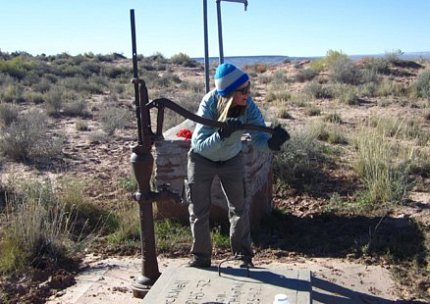Seminar Examines Structural Determinants of Health Disparities

People who live in rural communities comprise nearly one-fifth of the U.S. population. No single profile encapsulates rurality and health outcomes vary significantly between regions. While all rural residents experience higher rates of all-cause mortality, certain issues are more prevalent within specific racial and ethnic rural populations.
During a recent Rural Health Seminar, speakers highlighted the structural-level determinants of rural health disparities, the unique health burdens facing rural communities and how they intersect with other structural determinants, and the need for community-driven and -engaged research. Participation by staff and directors from several institutes and centers, as well as from then-NIH director Dr. Francis Collins, emphasized the agency’s commitment to improving rural health.
Improving the health of individuals in rural areas spans the missions of multiple institutes. Dr. Eliseo Pérez-Stable, director of the National Institute on Minority Health and Health Disparities, opened the seminar by explaining that underserved rural residents—such as persons from racial and ethnic minority groups, less privileged socioeconomic backgrounds and sexual and gender minority groups—often experience health disparities. He dispelled the myth that “bad behavior” engenders these disparities, offering instead that structural factors are the primary cause.
Subsequently, Dr. Richard Hodes, director of the National Institute on Aging, discussed NIA’s life course approach to studying rural health and rural health disparities. Dr. Rick Woychik, director of the National Institute of Environmental Health Sciences, introduced structural elements that have increased dangerous environmental exposures on rural communities. He discussed NIH-wide efforts to support research, partnering with rural communities, to address these exposures.

Photo: Emily Weilerure
Keynote speaker Dr. Karen Winkfield of Wake Forest University urged the audience to examine the geographic disparities in health and to tailor engagement strategies to specific communities. She and other presenters stressed the need to move beyond analyzing the existence of disparities to “working on the ground” toward community-engaged interventions. Tom Morris of the Health Resources and Services Administration then explained effects from structural determinants of health on health and disease in rural communities. These ongoing disparities include high rates of opioid misuse and overdose, Covid-19 hospitalizations and deaths and maternal mortality and morbidity from lack of obstetric care.
Many factors impact the health outcomes of all communities, from income and job opportunities to access to unpolluted water and healthful foods. Other panels focused on the impact of sociocultural and economic determinants of health and physical environment on rural communities. Afterward, early-stage investigators presented research describing interventions and multilevel frameworks tailored to, and developed in collaboration with, local communities of underserved populations.
Another session considered optimal methods of evaluation and measurement of rural health disparities to guide public policy.
Continuing the theme of collaboration, Dr. Melody Goodman of NYU’s School of Global Public Health emphasized the importance of rigorously evaluating stakeholder engagement, moving beyond “tokenism” to true partnership. These and other best practices—like honoring and leveraging local cultural wisdom—will be incorporated into new rural health resource hubs, like the one Dr. Brian Rivers is developing at Morehouse School of Medicine.
Examples of successful engagements were highlighted in the work of several presenting investigators, in collaboration with American Indian/Alaska Native (AI/AN) communities.

Photo: Lindsey Jones
Dr. Jani Ingram of Northern Arizona University discussed her work with the Navajo Nation communities to sample water from unregulated wells contaminated with uranium and arsenic, reporting the levels—and their expected effect on health—back to the communities.
Further illustrating the structural barriers to healthy physical environments, Dr. Tony Ward of the University of Montana discussed his work researching indoor wood smoke exposures, leading to poor air quality throughout winters, in remote and underserved areas of AI/AN reservations and villages.
Dr. Arleen Brown of the University of California-Los Angeles charged the audience to strive for specific opportunities to improve rural health, including adaptive models of care like telehealth, greater understanding of environmental pollutant sources, research on policy implications and greater diversity in the investigator workforce.
“There should be more opportunities for conducting interdisciplinary and multisectoral work…thinking about a different type of workforce, including community members who can serve these navigator or translator roles in a way that no academic investigator will ever be able to,” she said.
View an archived recording of the workshop at https://videocast.nih.gov/watch=43942.
The seminar was supported by NIMHD, NIA, NIEHS and the National Institute of Allergy and Infectious Diseases.
